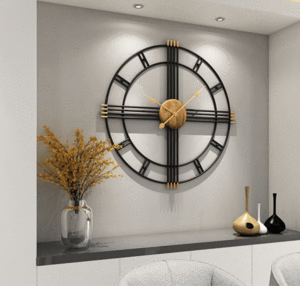
In the olden to modern way, there are many numbers of wall clocks have been produced. horloge murale design is said to be a famous wall clock design.
Sundial wall clock

In the sky, the evident situation of the Sun moves throughout the span of every day, mirroring the turn of the Earth. The shadows are cast by fixed articles moving one by one, so their site can be utilized to demonstrate the hour of the day. This type of clock shows the time by showing the situation of a shadow on a level surface, which has markings that compare to the hours. It can be flat, vertical, or in different directions. Sundials were broadly utilized in antiquated times. With the information on scope, an all-around developed sundial can quantify neighbourhood sun-based time with sensible exactness, inside a little while. Sundials kept on being utilized to screen the presence of tickers till the 1830s, by the utilization of the message and train to normalize time and time regions between urban communities.
Gadgets that action term, slipped by time and intervals
Numerous gadgets can be utilized to check the progression of time without regard to reference time and can be valuable for estimating span or stretches. Instances of such term clocks are incense clocks, light tickers, and the hourglass. For both the light clock and the incense perfect timing on a similar standard wherein the utilization of assets is pretty much consistent permitting sensibly exact and repeatable assessments of time entries. In the hourglass, sand is pouring through a little opening at a steady rate shows a subjective, foreordained section of time. The asset isn’t burned-through yet re-utilized.
Water clock
Water timekeepers, alongside the sundials, are conceivably the most seasoned time-estimating instruments, by the solitary special cases being the day checking count stick. They give their incredible relic, when and where they initially existed isn’t known and may be mysterious. The bowl-moulded outpouring is the least complex type of water clock and is called to have existed in Egypt and Babylon around the sixteenth century BC. Different areas of the world, including China and India, likewise have early proof of water tickers, however, the most punctual dates are less sure. A few writers, notwithstanding, expound on water timekeepers showing up as right on time as 4000 BC in these districts of the world.
In Athens, The Tower of the Winds in the first century is developed by the regulation of Greek stargazer Andronicus of Cyrrhus. The Roman and Greek civilizations progressed water clock plan with further developed precision. These advances were gone on through Islamic and Byzantium occasions, in the long run advancing back to Europe. Autonomously, the Chinese fostered their high-level water clock named Abul-Abbas cks in 725 AD, giving their plans to Japan and Korea.
Islamic development is credited with additional propelling the exactness of tickers with intricate design. In 797 (or conceivably 801), the Abbasid caliph Harun al-Rashid gave an Asian elephant along with an “especially intricate model” of a water timekeeper. Pope Sylvester II acquainted timekeepers with western and northern Europe.


